Moldavites - the only precious stones in the world, which are found only in the Czech Republic
Formation of the Moldavites
How were the Moldavites, precious stones found only in Bohemia, created? Several theories exist. The most commonly accepted theory is that the Moldavites originate from the fall a large meteorite or small planet into the Bavarian area at the later site of the town of Nordling.
About 14.5 – 15 million years ago, large meteorite fell into this area at an angle of about 30 degrees. Its diameter is estimated at 800 – 1,000 metres. Upon its entry into the stratosphere, a penetrating temperature increase occurred that continued to rise.
It is estimated that just before impact its temperature was 5,000 - 10,000 °C. At the same time, the pressure sharply rose to about 500 Mpa. The temperature and pressure wave pulverised and melted the quartz rock at the point of impact just prior to the impact of the body.
The molten rock was thrown by the pressure to a height of 15 – 20 km to the border of the stratosphere approximately in the north-eastern direction into the area of Bohemia and Moravia. Unique Moldavite findings are reported, for instance, also from Austria and Lusatia in Germany.
The impact of the meteorite caused a big explosion, which made the Ries crater. The crater is located in the area between Nuremberg, Stuttgart m and Munich. Fig. 3
This crater with diameter of 24 km and initial depth of up to 200 m is the residue of an enormous impact. Clearly, the impact resulted in the secondary ejection of the initial rock and formation of “ secondary” Moldavites.
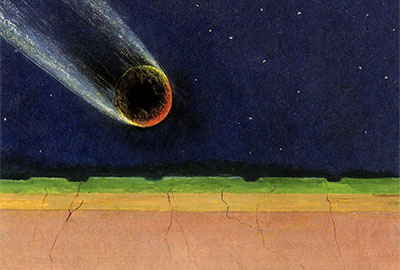
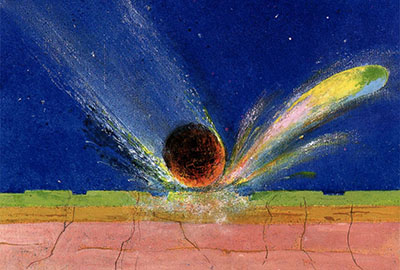


A few points of interests in closing. Most of the Moldavites contain bubbles. These comprised the subject of research at the Faculty of Science Charles University, Institute of Geochemistry, Mineralogy and Mineral Resources in the 70s of the last century. The research was conducted under the guidance of prof. Rudolf Rost and prof. Vladimír Bouška. The scientists ascertained that the pressure in the bubbles is in the range of 40 – 50 hPa. Or in other words, the pressure is about 20 – 25x lower than the pressure of the sea surface. This finding confirmed the theory that the Moldavite matter passed through the stratosphere.
It was further ascertained that the Moldavites are chemically almost identical with the argillaceous rocks, but unlike volcanic glass, they almost completely do not have any water content.
The hardness of the Moldavites is not the same. It is in the range of 5.5 to 6.5 on the Mohs scale. Higher hardness is characteristic of Moldavites with a higher Si02 content. At the same time, the density of the Moldavites fluctuates in the range of 2.2 to 2.9 g/cm3.
Sculptation is a characteristic feature of Moldavites. This is the raggedness of the surface, which is formed by the “striations” of various sizes. Sculptation is a secondary phenomenon, which is caused by natural etching of a surface that had different levels of hardness. Sculptation differs according to the sites. The Moldavites from the Besednice site have the deepest sculptation. The beautiful, medium deep sculptation is characteristic of the Moldavites from the Chlum nad Malší site and its surroundings. The Moldavites from the Jankov site are, for instance, almost free of sculptation. This concerns Moldavites from an impact area without further transport.
Overview of the Moldavite deposits in Southern Bohemia
Several tens of Moldavite cumulation sites exist in Southern Bohemia, which we can term as deposits. The lucid geological map with a presence of Moldavite deposits is given in the publication by BOUŠKA, V. : Moldavites The Czech Tektites, p. 37, Prague,1994. Not all the sites stated in the publication can be exploited. Some are located in farm land, other are in protected landscape areas. Some smaller sites, which were discovered in 1994, are not stated in the publication.
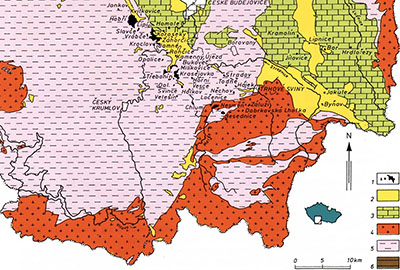
Broader area of the Chlum Mountain (Chlumska hora) area
This area is roughly delimited by the localities of Chlum nad Malší – Ločenice – Nesměň – Northern (severní) Besednice (Stoh). It is a drift zone, i.e. the Moldavites were subjected to a certain level of transport during sedimentation of the quaternary strata. The shapes also correspond with this. Here, we find full shapes, for instance, drops, disk shaped Moldavites and similar. Sculptation is usually well-developed in most of the cases. The Moldavites rather have the character of collection pieces. The largest pieces weigh about 100 grams. The material that contains Moldavites is strongly argillaceous with an argillaceous particles content of about 20%. The average content of Moldavites is about 20 – 25 grams/m3of rock.
a) Legal mining at the Chlum nad Malší site started already in 1988 and continues to date using modern equipment.

Fig. 1. Chlum nad Malší. Moldavites were “mined” without using equipment. The material was dug out and the Moldavites were picked by hand. 1990.
Mining of Moldavites improved in time. The Moldavite bearing material was loaded on a traditional line and was separated using cutter washers and sieved. The Moldavites were picked by hand from the concentrated Moldavite material (gravel sand).
Fig. 2. View of a traditional line in 2006

Fig. 3. Overall view of a traditional line in 2006

As already mentioned, mining continues to data at the Chlum nad Malší site. The mining area is expanding toward the Municipality of Ločenice. Apart from Moldavites, quality sand is also mined here.
Since the author does not have current mining photographs, he features photographs from Google Earth.
Fig. 4. Current view of Moldavites and sand mining at Chlum nad Malší
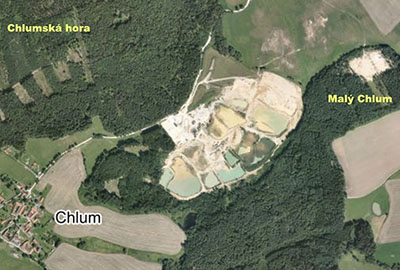
Fig. 5. Illustrations of Moldavites from the Chlum nad Malší site

b) Illegal mining at the Nesměň site
The Municipality of Nesměň lies about 3 km easterly of the Municipality of Chlum. Beyond the municipality, in the forest, is the same scope of Moldavite sediments like in Chlum. Mining in Nesměň and the surroundings was never permitted, so it has become a target of illegal Moldavite diggers. The following images clearly show the devastation of the forest committed by illegal Moldavite diggers.

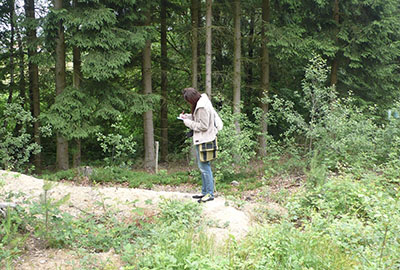
c) The illegal mining site of “Malý Chlum”.
This site lies in close proximity to the Chlum nad Malší mining site. It has also become the target of Moldavite diggers. The photographs are from 2002.


d) Illegal mining at the Besednice site – South “Stack”
The Moldavite sediments continue in the direction of Besednice Township along the road. In the 80s, an agricultural stack was in this area. The illegal diggers renamed this area after the stack. The following photographs show the ground plan. Photo 2005.

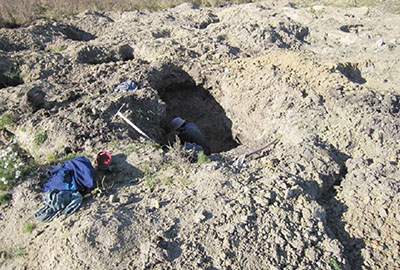
Illegal digger in action.
2. Moldavite deposit sites in the vicinity of Slavče u Trhových Svinů
Moldavite mining was never permitted in this area. This area has 3 sites that were “exploited” illegally.
a) Zatáčka (Bend)
This site was named according to the bend of the local road running from Slavče to Dobrkovská Lhotka. There is a small Moldavite drift zone on the left side of the road from Slavče. This site was strongly water-logged. The following photographs show the condition in 2005.


Moldavites can also be mined in this manner. Photo 2005.
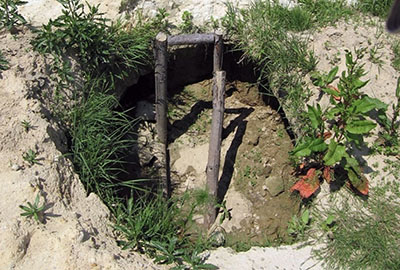
b) Na Parízu
The Na Parízu or also Paríz site is a meadow below a former fish pond not far from Zatáčka. Well sculpted Moldavites were present here. The site was illegally exploited completely.


The current condition of both sites is shown in the following PrintScreen images.

c) Slavče (pod hřbitovem)
The Slavče site was unknown for a long time because the tertiary sediments are covered by a thick layer of quaternary soils. After the geological survey, the site was completely devastated by illegal diggers and in principle completely exploited.

Some diggers even connected water to wash the sediments from a distance of 300 m. Photo 1999

In some cases, up to 20 diggers were active at the site. Photo 1999

Detailed view of the exploited area. Photo 1999.

Result of the full day’s work of the group – about 500 g of raw Moldavites. Photo 1999.
3. Besednice Site
The Besednice Moldavites are perhaps the most popular. They are characterised by very deep sculptation, which in some cases forms sharp -pointed edges. They are the typical Moldavites of the fall field with very short transport. The site is very close to the Township of Besednice and is relatively small. Its dimensions are 70 x 200 m. The thickness of the Moldavite rocks (gravel sand) is up to 4 m and covered by the position of the slope soils. The site was mined in the period 2002 – 2008. The total volume of mined Moldavites is not known precisely, but is about 200 kg. Mining was carefully documented and the following photographs illustrate its progress.
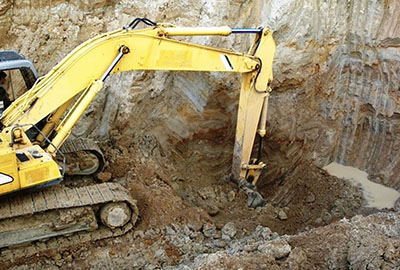
Mining and loading of Moldavite rock

Geological profile of the mine wall. Height 4 m. Below the overburden layer is light grey clayey sand sediment, and about 1 m below it is a thick brownish-red Moldavite layer, which has clayey sand below it again.

Washing of mined Moldavite gravel on a vibration sieve

Washed material with an eventual presence of Moldavites. The search for Moldavites must be done by hand.

4. Hrbov (Netolice) Site
The Hrbov site was the last mined Moldavite site. Mining stopped about 3 years ago and the land is currently being reclaimed.
The Moldavites from this site are highly variegated. Most of them do not have sculptation and are typical fall field Moldavites. The colour is also variegated. Many Moldavites are brownish, such that they rather have the semblance of Moravian Moldavites. Wholesome Moldavites are very rare among them. Droplets, eventually discs are a big rarity. The Hrbov Moldavites are found in argillaceous to claystone sediments. For this reason, their mining was demanding on washing and removal of impurities. Currently, they are the dominant Moldavites on the market.

Moldavites from the Hrbov site.
Colour of the Moldavites
Most of the people assume that the Moldavites are natural green-coloured gemstones. But this is not so precise. The Moldavites include many colour shades, from light green to brown colour. Even at one site, the Moldavites mostly have multiple colour shades.
Generally, the following are distinguished:
a) pale green. This colour is very rare and the typical sites with a larger content of pale green Moldavites are Jankov and Radomilice
b) light green. It is relatively rare and makes up to 10% of the colour frequency at the mapped sites.
c) bottle green colour. It is the dominant colour at most of the sites. AT points, it makes up 90 % in terms of colour frequency. (Chlum, Besednice)
d) olive green. It is the marginal colour of Moldavites. The representation of the brown colour reduces the quality of the Moldavites. A typical site that has Moldavites with this colour is for instance Hrbov
e) brown colour. This colour does not appear in Moldavites found in the territory of Bohemia, but is on the contrary very common on the Moravian sites. They are rather rare pieces, which are processed further
Moldavite fraud
Recently, some foreign language websites are offering Moldavites and the offer is strange in that the prices are too low and the colours and design also do not match.
An inexperienced collector can encounter “Moldavites” that are yellow, blue and red with particularly rounded shapes. But this has nothing to do with Moldavites!
A further popular trick is the use of green glass castings, which make the impression of very properly processed glyptics. The castings do not contain sculptations. Sometimes artificial sculptation is also used. This sculptation is made by means of diamond drills and subsequently finished with a solution of sulphuric and hydrofluoric acid, which make the “product” glossy.
Castings of raw Moldavites, which were obtained from moulds created according to real Moldavites are also common. Here, it particularly applies that no two Moldavite pieces can be identical.
These fake Moldavites lack the primary features of real Moldavites that originate from the Czech deposit sites. They do not have irregular bubbles and particularly do not contain a fluvial structure and the rare natural glass (Lechaterierit), which forms irregular structures in the Moldavite. For this reason, we recommend purchasing Moldavites from proven sellers and not from an unknown website. When purchasing suspicious Moldavites, use a magnifying glass with at least 10x magnification.

Fig.1 Elongated bubbles in the Moldavite. Site Ločenice, magnified 39x
Fig.2 Moldavite with Lechaterierit, striae and small bubbles. Koroseky Site, magnified 45 x

Fig.3 Micro photo of a Moldavite with bubbles and Lechaterierit from the Vrábče Site. Magnified 50x.
The photographs are adopted from BOUŠKA, V.: Moldavites The Czech tektites, p. 30, 31. Prague. 1994
Esoteric properties of Moldavites
Many properties are attributed to Moldavites, for instance, that wearing them brings happiness, health and welfare. I do not know if this is not true.
But what is scientifically proven is the fact that they are capable of influencing the human bio-field (aura). The biofield is a scientifically proven invisible envelope around each organism, which consists of a set of particles that produce radiation of various intensities and wavelengths. It is thus somewhat an image of the biochemical processes in the organism and hence an indirect source of information about its condition.
An instrument was developed in the USA that is capable of measuring the intensity of the biofield (waves) and the important thing is that it is capable of converting it to colours. Standard physical rules apply here. The red colour has a wavelength ranging from 650 to 790 nm. On the other hand, the blue colour has a higher frequency ranging from 430 to 490 nm. Other colours of the visible spectrum are between these terminal limits – green, yellow, orange. The author of this chapter purchased the AuraCamera 3000 in LA and used it to make many comparative pictures. Ge got clear proof that the Moldavites can influence the aura (biofield) and hence illustrate the biochemical processes in the human body. The following photographs are proof of this.
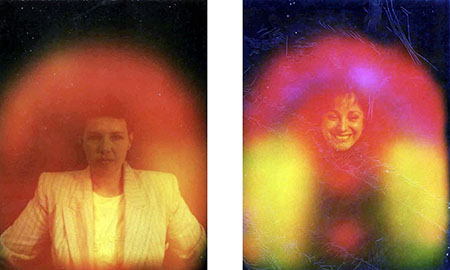
Fig. 1 Bio-field of a healthy woman, aged 36 - Red colour - Dominant strength, vitality, energy
Fig. 2 Bio-field of a healthy woman, aged 38 - Admixture of yellow colour – health, comfort, strong personality

A woman aged 38. The left image shows the weak irregular greenish aura. This indicates harmony and hope, but they are limited. After Moldavite activation (right image), there was a significant increase in the radiated biofield. This is a momentary increase in the mental balance and determination.

A woman (healer) aged 39. The left image clearly shows a big bio-field with a combination of light green and blue colour. This indicates that the concerned person is making an effort to obtain knowledge, is devoted to faith and the ideal with some mission. The bio-field changed after activation of the Moldavite (photo on right). The field is enlarged and has a red colour. The Moldavite instantaneously charged the woman with energy and vitality. Symbolizes the desire to create something new.

A man aged 48. The left side of the photograph shows the bio-field without activation. The right side of the photograph shops bio-field 2 after activation using polished Moldavites placed against the neck and heart chakras. The right side shows the higher activity of both chakras. The bio-field is larger and has a dominant Orange colour, which symbolizes self-confidence and joy of life.
How can the Moldavites be used to activate the bio-field and hence provide energy? In principle, two methods exist. In both cases, it is first necessary to charge the Moldavite “with energy”. Natural and polished Moldavite is exposed to solar radiation on a non-conductive base for about half an hour.
In the first case, we get into a relaxed position and hold the Moldavites in the hand for about 15 minutes. It is recommended not to think about anything and concentrate only on this task. Hypersensitive individuals (about every third person) may feel the Moldavite heat, tingling or get a similar feeling.
In the second case, after “charging” the Moldavites are placed on the heart chakras and on the solar plexus chakra. These natural energy inputs known from Eastern medicine easily absorb energy and guide into the body through the energy meridian paths. In this method, it is proposed to use polished Moldavites.
In conclusion, we would like to state that this chapter is intended not only for collectors of Moldavites, but mainly for persons involved in esoterics.
